Roger Cook’s Step-by-Step Method

The best outdoor spaces are a seamless blend between the man-made and the existing landscape. That’s why This Old House landscape contractor Roger Cook chose native Goshen stone for this patio, nestled along the craggy Massachusetts coast in Manchester-by-the-Sea. For this project, Roger designed and built a 15-by-25-foot waterfront patio, plus a flight of stone steps leading up to an existing brick landing. Close enough to dip a toe in at high tide, the seaside perch offers panoramic views of the inlet and boulder-strewn cliffs. Here’s a look at Roger’s method.
Lay out the site
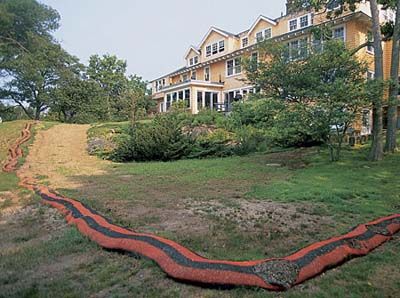
For a natural look, the plan follows the contours of the site, with steps cut into the shallow hillside and the patio on level ground below. Because of its waterfront location. the area is surrounded by a straw-filled barrier called a wattle, which prevents construction debris from running off into the inlet.
Excavate the area
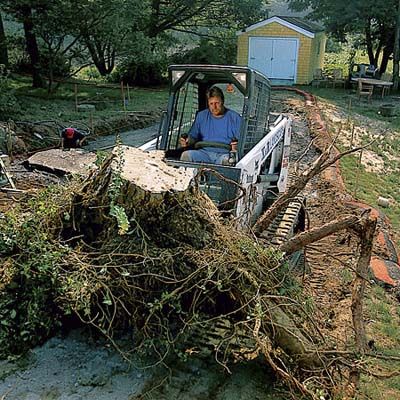
Any vegetation in the path of the patio must be removed. Roger uses a skid-steer loader to clear the site, then excavates 8 inches of loamy soil. The 4-inch-thick stone slabs will sit on a base of 4 inches of free-draining gravel. Lighter, thinner slabs, such as bluestone, often require a base of stone dust mixed with cement to set them firmly in place. “These aren’t going anywhere,” Roger says.
Set the base
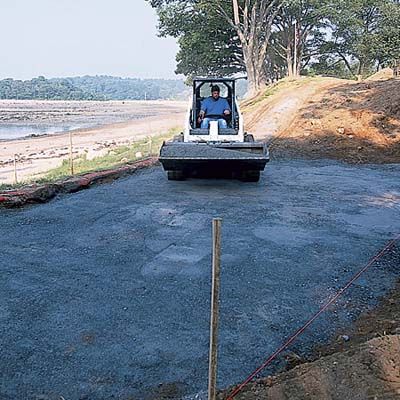
After the subsoil is compacted to make a solid, Roger dumps in the gravel layer. Orange mason’s line stretched between stakes represents the finish grade and also designates the surface’s pitch of 1/8 inch per foot. The gentle slope keeps rain from pooling on the stones.
Tamp the gravel
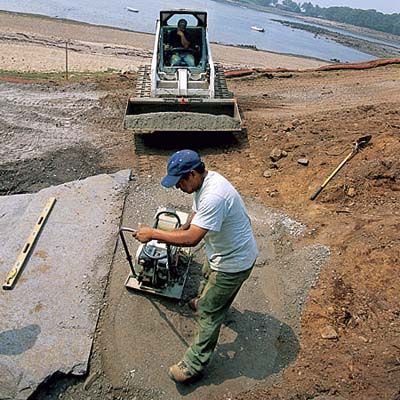
A crew member compresses the gravel base with a plate compactor. When the tamping is finished, the base will be packed hard and smooth, ready to receive the paving stones.
Piece the stones together
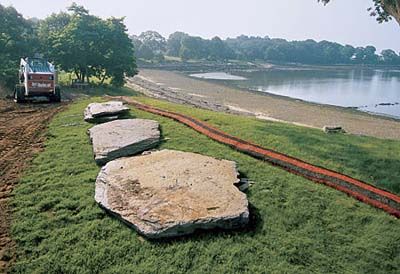
Before arranging the stones on the patio site, the crew spreads out the pieces and “dry-fits” them, looking for edges that line up without being cut. “It takes a lot less time to dry-fit the stones together than to cut all four edges,” says Roger. A test run is a good idea when using irregularly shaped stones, whether they’re massive blocks like these or smaller ones that you fit by hand.
Set the stones
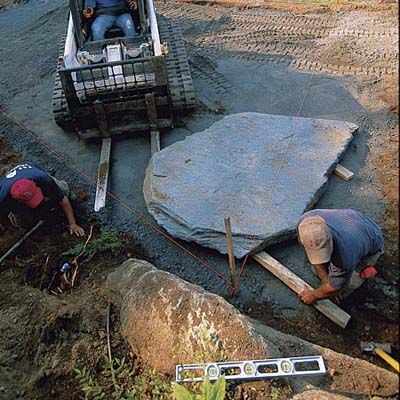
The loader slides a slab onto a pair of 2x4s. The lumber keeps the machine’s tines from disturbing the base and allows the crew to maneuver the stone into its final position. Once it’s in place, the lift hoists a corner so the 2×4’s can be removed.
Check the fit
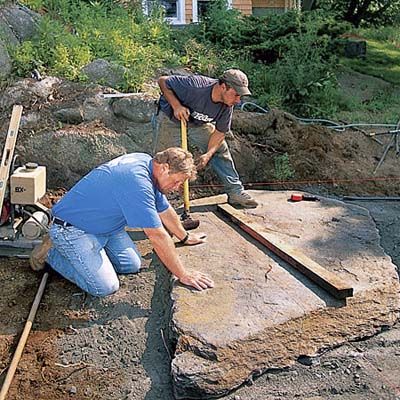
With a 2×4 to cushion the blow, the slab gets a few solid whacks from a sledgehammer to assure that it’s snug against the base, which prevents water from seeping in and shifting the stones when it freezes. Later, when the patio is finished, a sweeping of stone dust will fill the narrow joints.
Count out the steps
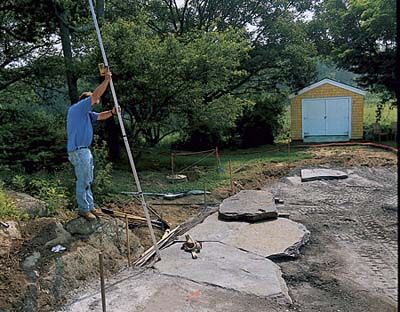
Roger uses a laser level and a grade stick to figure out how many 6-inch-high stone steps will be needed to span the 12 feet the stairs will climb. Measuring from the bottom, he aligns a yellow “receiver” with a laser being projected from the planned height of the top stair, then divides by 6 to arrive at 24 steps.
Cut the treads
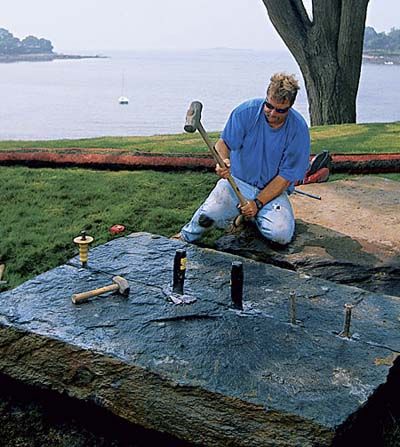
A circular saw with a 14-inch diamond blade could cut through the 4-inch patio stones, but the blade would not fully bisect the thicker, 6-inch stair slabs. Using a sledgehammer and splitting wedges, Roger breaks a rock along a line he first scored with a saw.
Set the stone in place
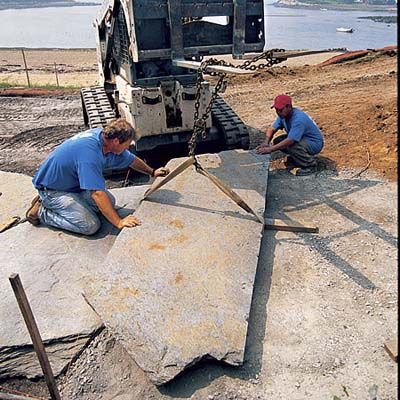
Like the patio below, the hillside was excavated, and a gravel base installed. Each step will rest partially on compacted gravel and partially on the previous step. Because using the forks could damage the stair underneath, the lift gently sets the stones into place with a nylon strap and chain harness. After the tread is in place, Roger checks it with a 4-foot level. Each one has to be perfect, or it will throw off the entire stairway.
Finished stone steps
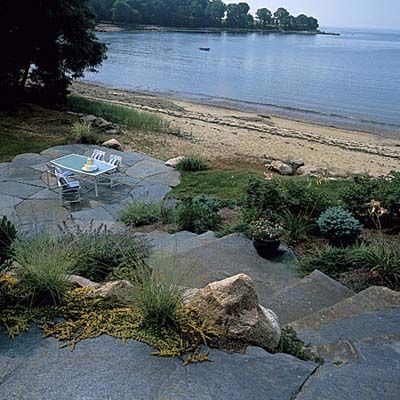
The beachfront outcroppings of patio and stairs, finished and fully landscaped. The weighty Goshen stone needs no edging to hold it in place, so the patio can have a natural, irregular border.
